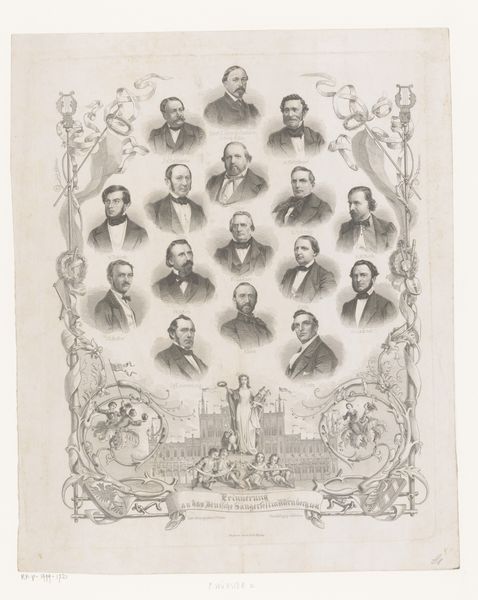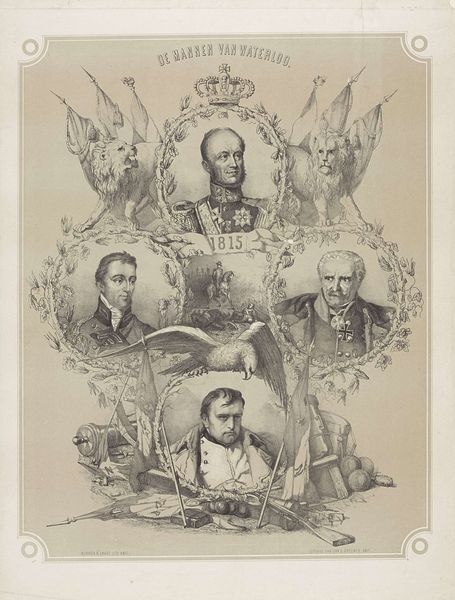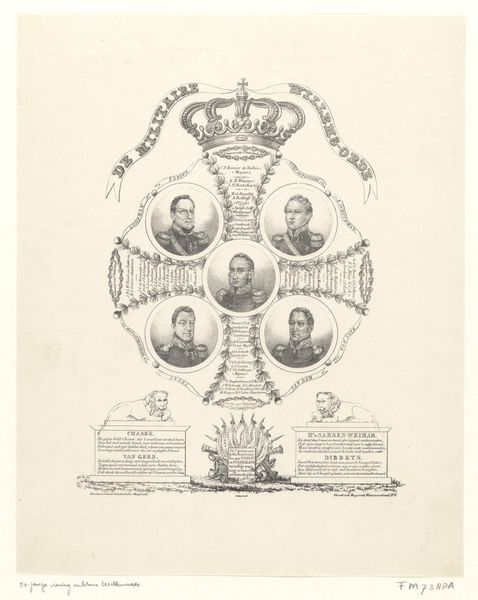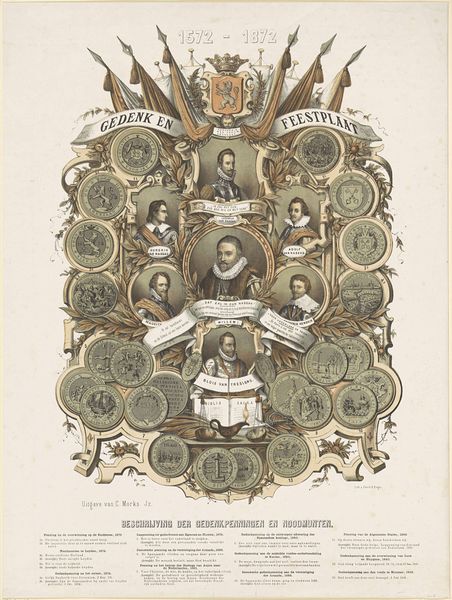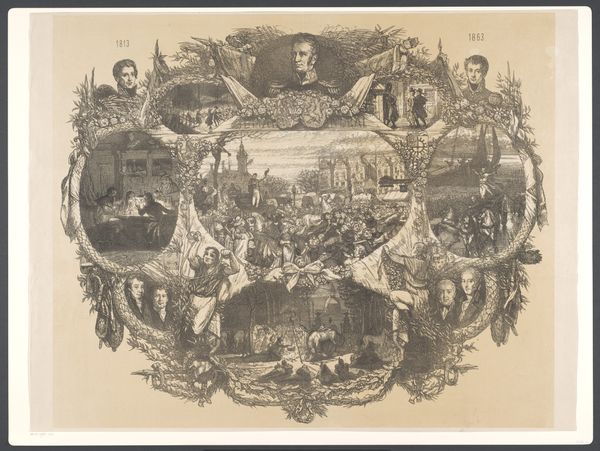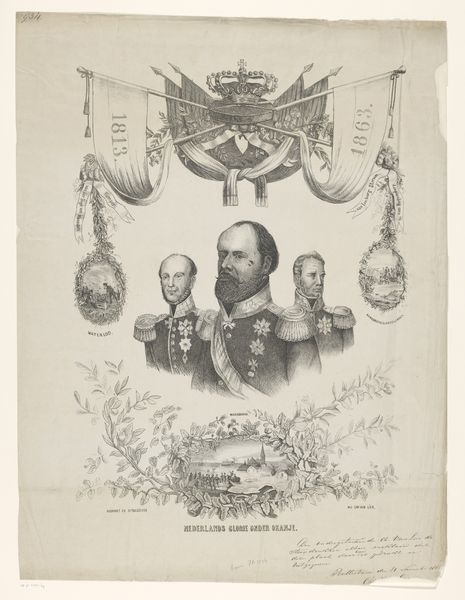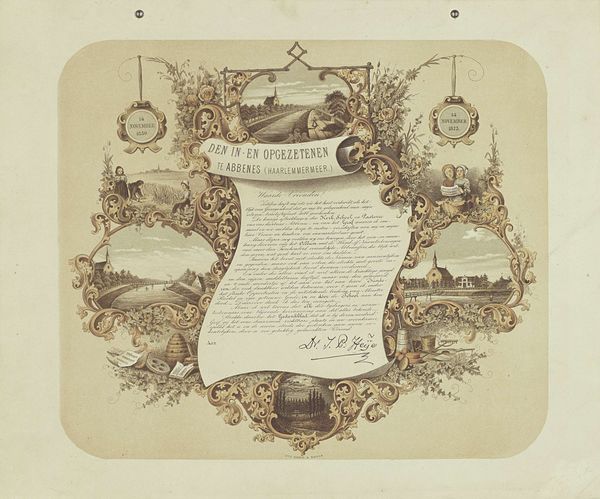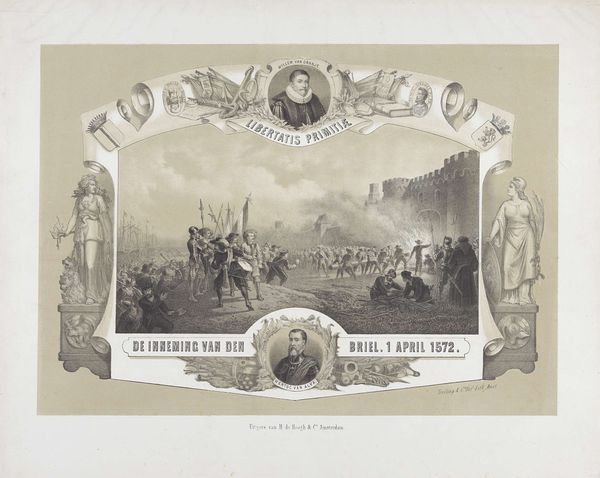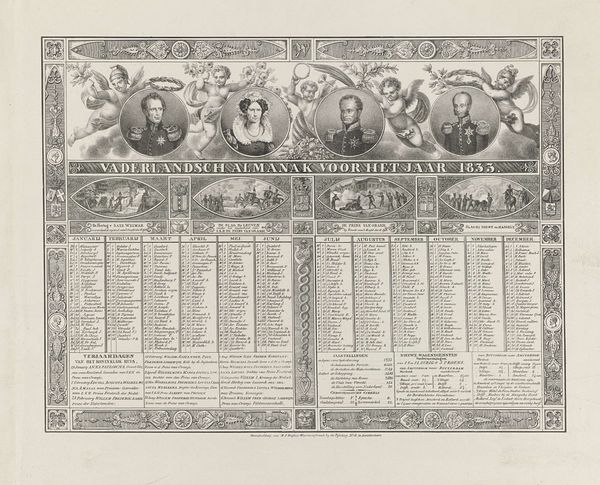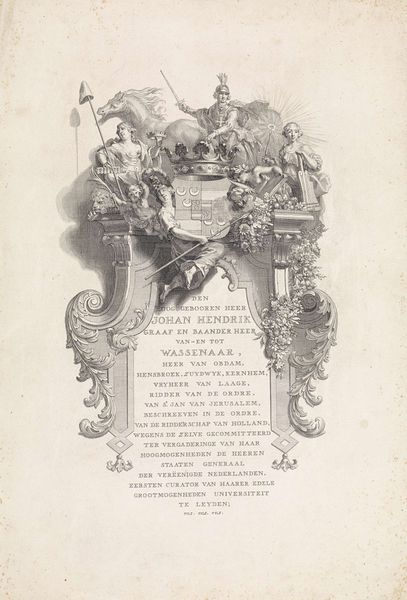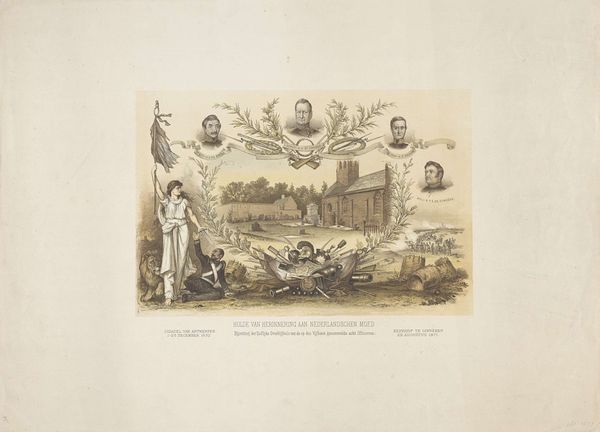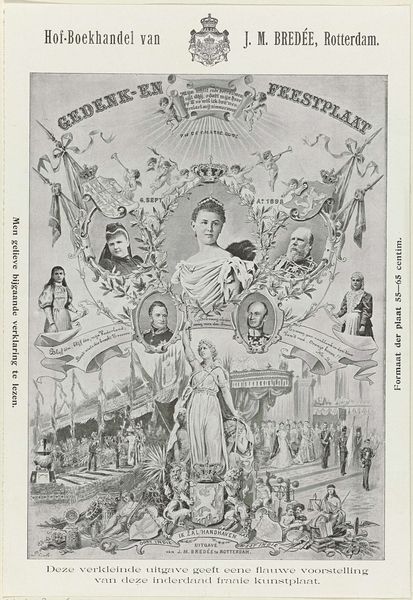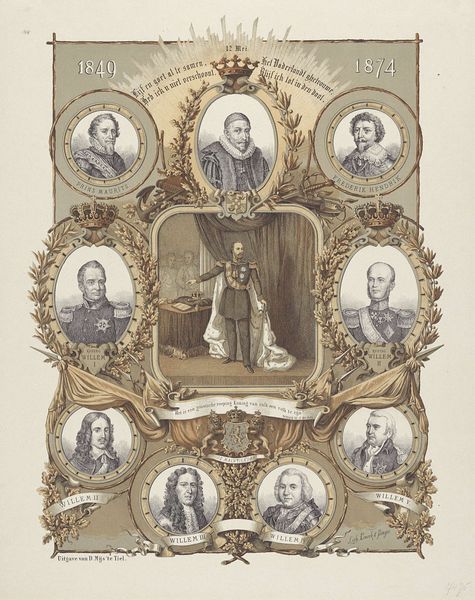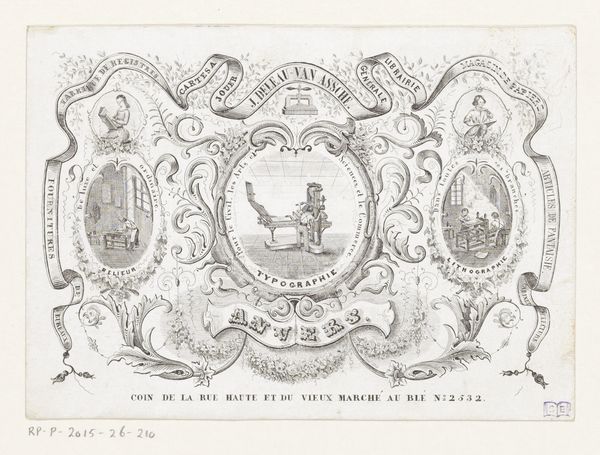
Gedenkplaat vijftig jaar onafhankelijkheid van Nederland, 1813-1863 1863
0:00
0:00
albertusanthoniusnunnink
Rijksmuseum
graphic-art, print, engraving
#
portrait
#
graphic-art
#
pen drawing
#
dutch-golden-age
# print
#
pen illustration
#
pen sketch
#
old engraving style
#
landscape
#
personal sketchbook
#
sketchwork
#
pen-ink sketch
#
pen work
#
sketchbook drawing
#
history-painting
#
sketchbook art
#
engraving
#
realism
Dimensions: height 338 mm, width 425 mm
Copyright: Rijks Museum: Open Domain
Editor: This is "Gedenkplaat vijftig jaar onafhankelijkheid van Nederland, 1813-1863," a print from 1863, currently held at the Rijksmuseum. It commemorates fifty years of Dutch independence and features detailed engravings. What stands out to me is the sheer amount of detail that was manually etched into the printing plate. How do you approach a piece like this? Curator: Well, first, consider the means of production. Engravings like this involved specialized labor, requiring skilled artisans to transfer designs onto metal plates. This particular print, celebrating Dutch independence, connects the material act of its creation to the socio-political context. What do you make of the decision to create prints instead of paintings for such commemorative occasions? Editor: Maybe prints allowed for wider distribution and consumption, thus engaging a larger populace with the nationalist message? Unlike unique paintings that were exclusively seen by elites. Curator: Exactly! The deliberate choice of a readily reproducible medium highlights a desire to democratize the commemorative experience. It moves beyond the exclusive sphere of high art. Editor: So it's not just *what* is depicted but *how* it's distributed. Curator: Precisely. Furthermore, the intricate decorations around the central text aren't merely ornamental. What could this ornate framing indicate about the perception of labor? Editor: Perhaps that celebrating an event, a specific history, is done by creating intensive manual labor; as the independence cost laborious war, this piece equally needs time and care. The means justifies the end, perhaps? Curator: Very astute. Now, how does considering this change your perception of the piece? Editor: It transforms it. What initially felt like a formal commemorative piece now resonates as a statement on production, consumption, and access to shared history. Thanks! Curator: Indeed. Understanding the print's materiality illuminates its relationship to broader historical and societal forces.
Comments
No comments
Be the first to comment and join the conversation on the ultimate creative platform.
